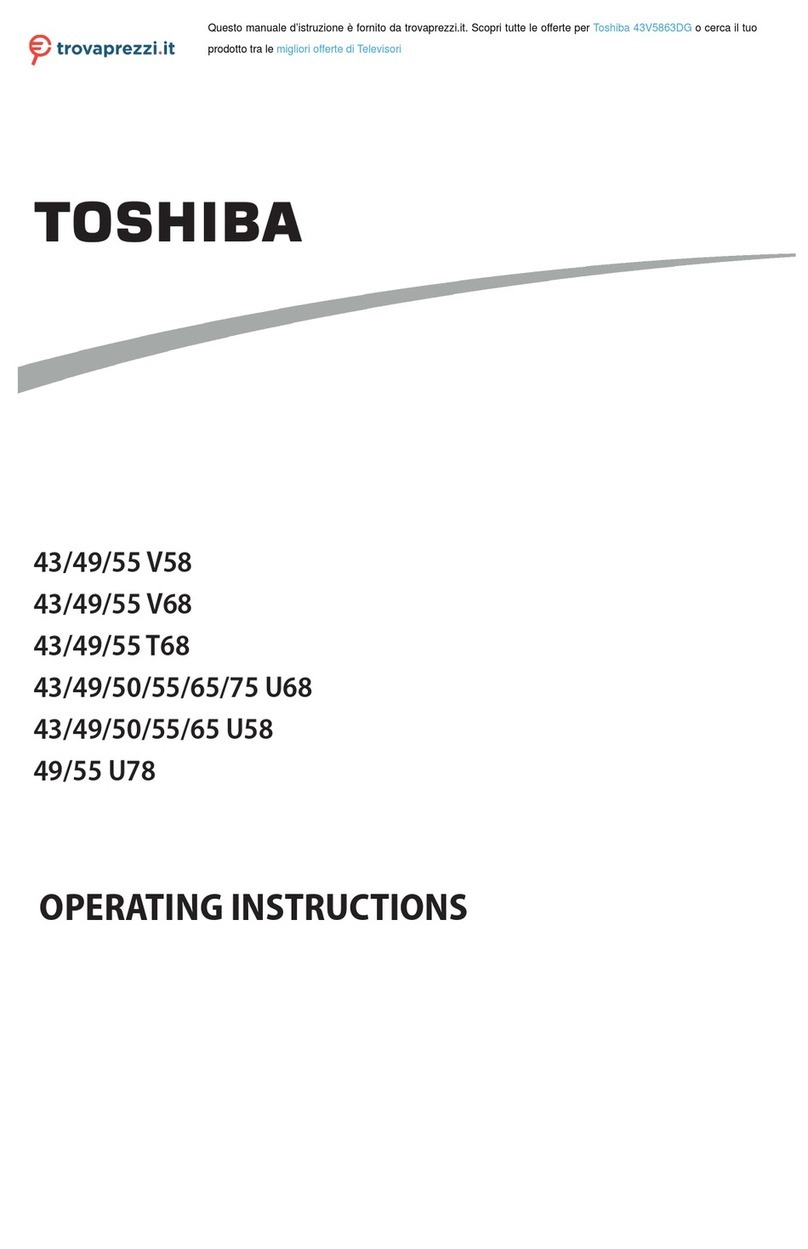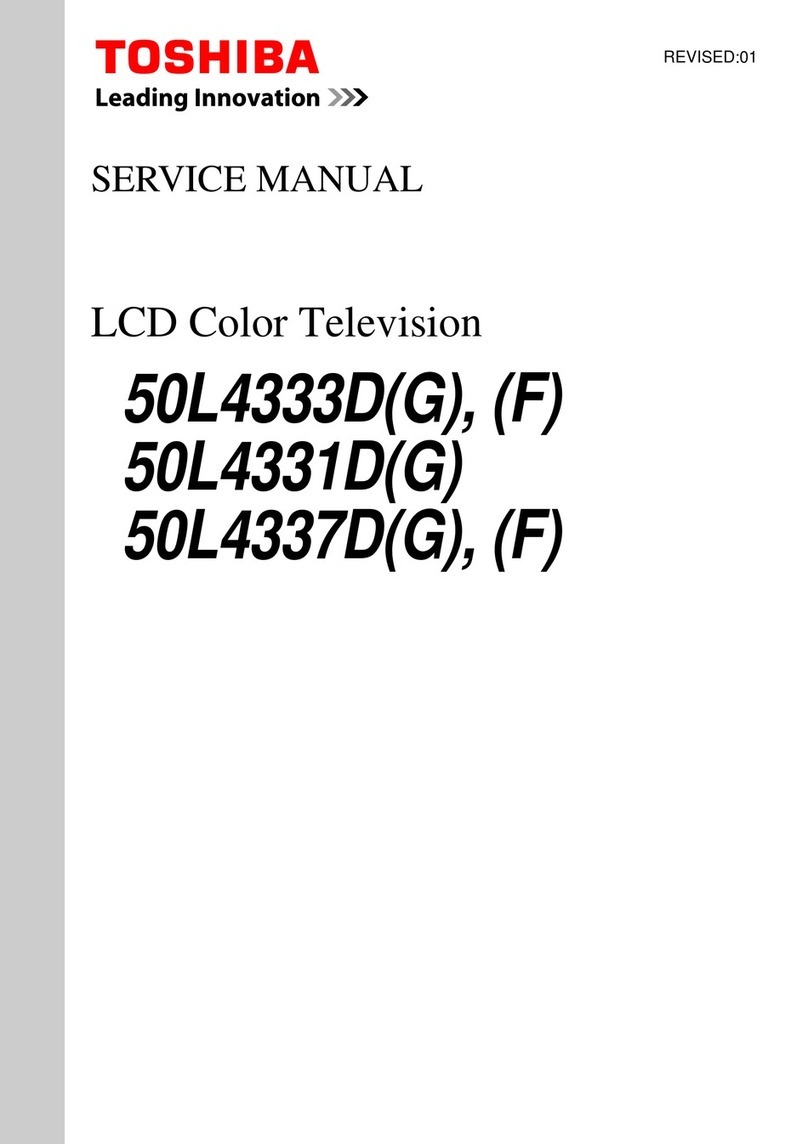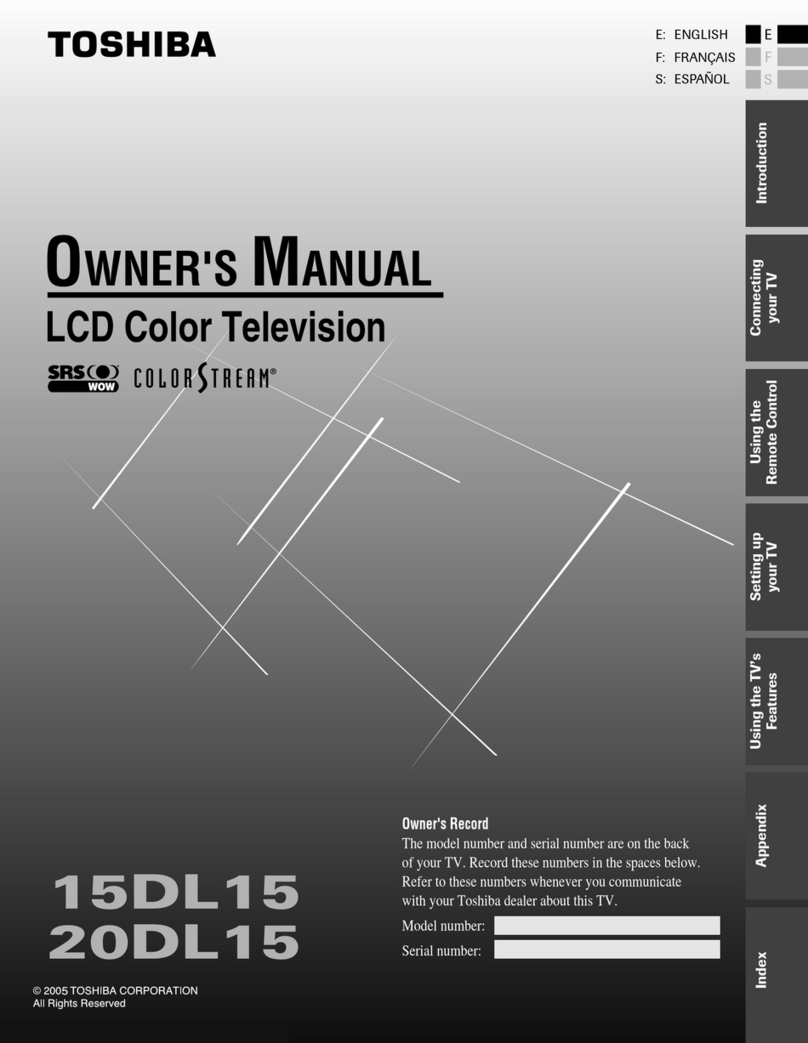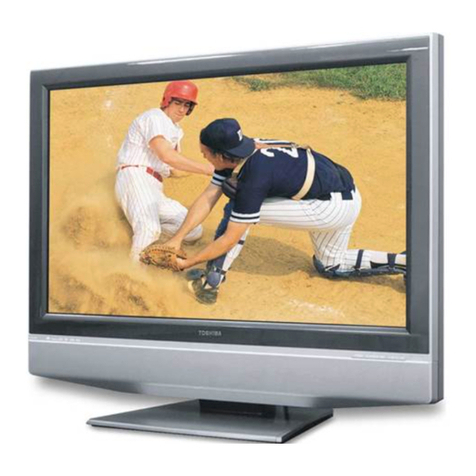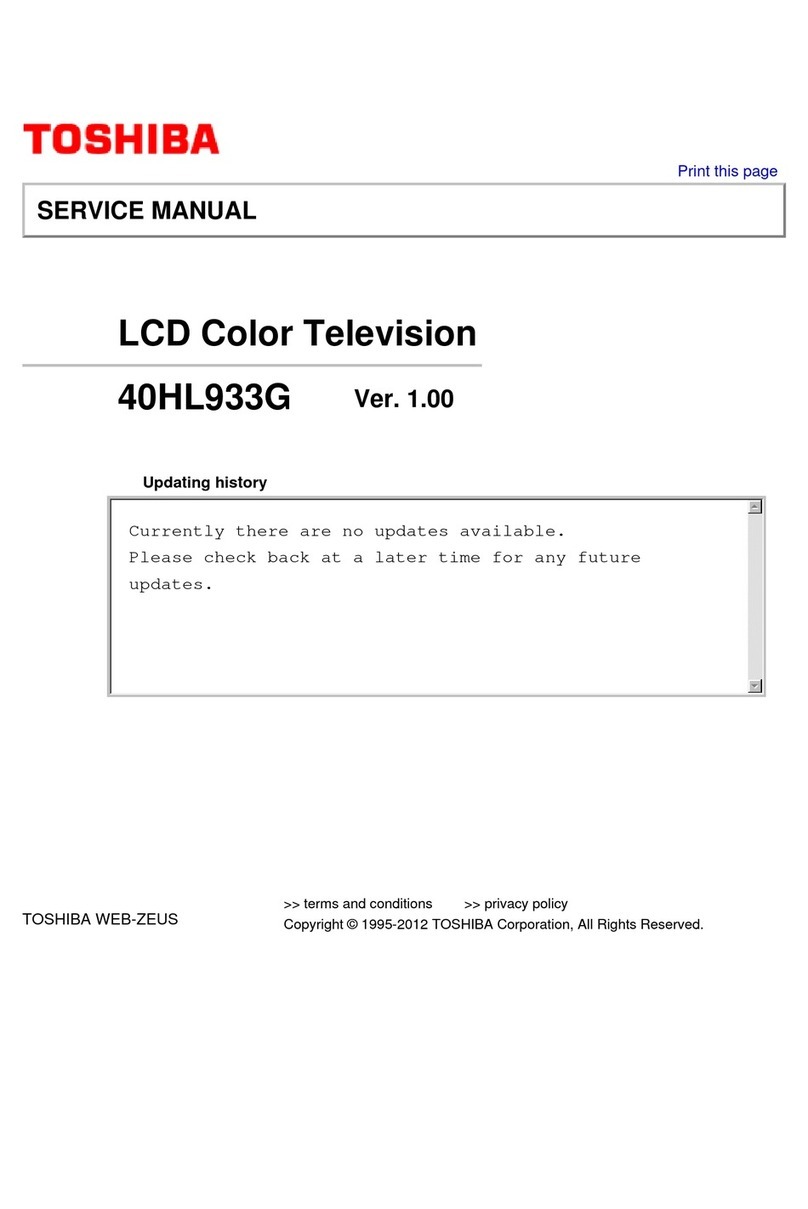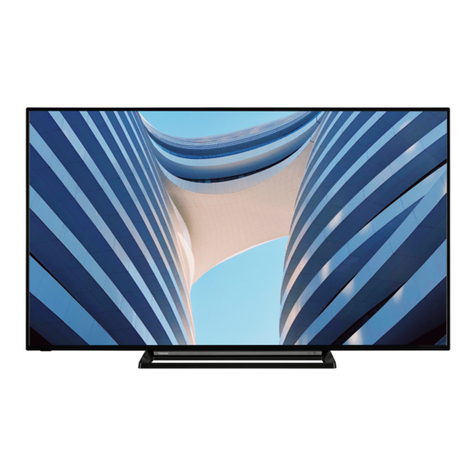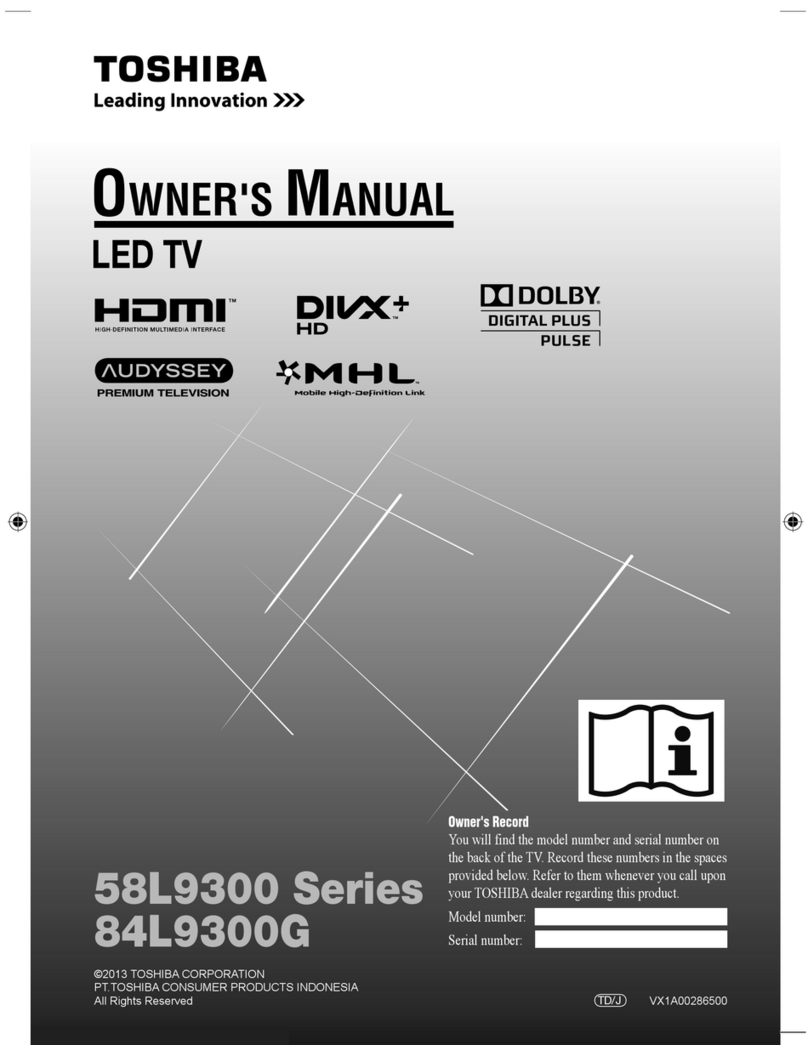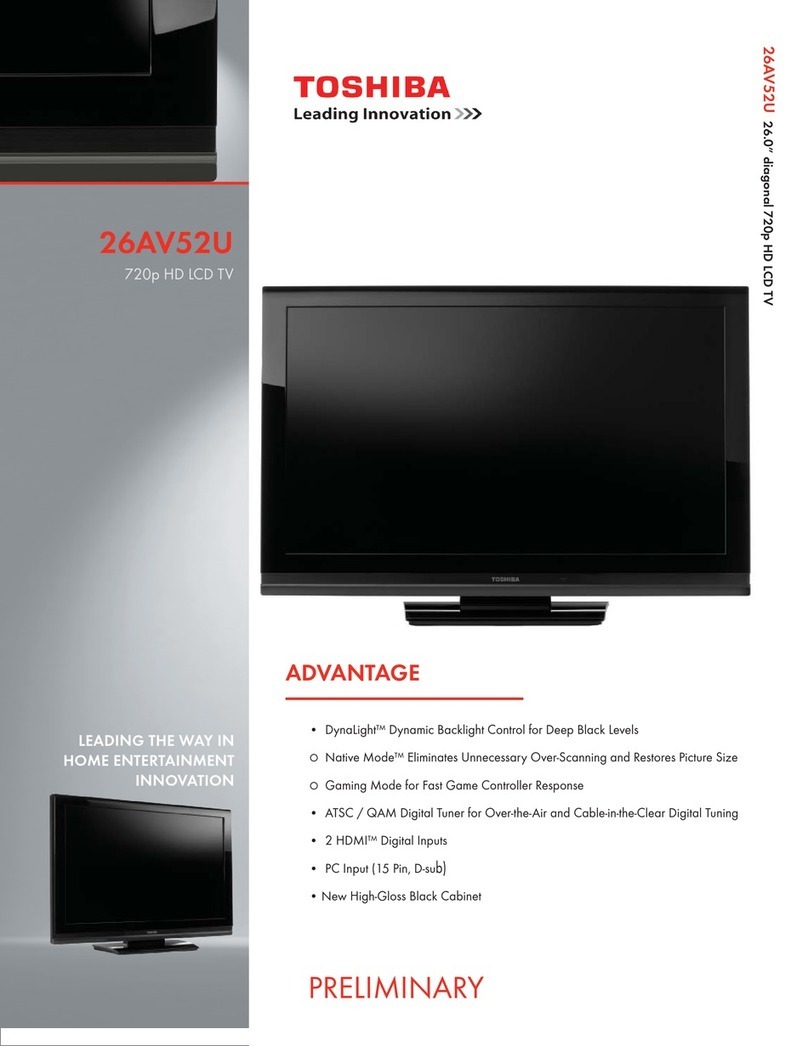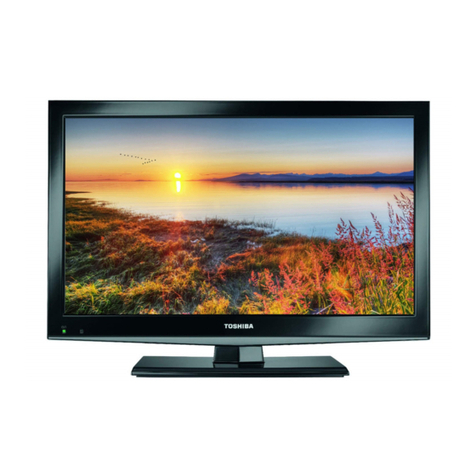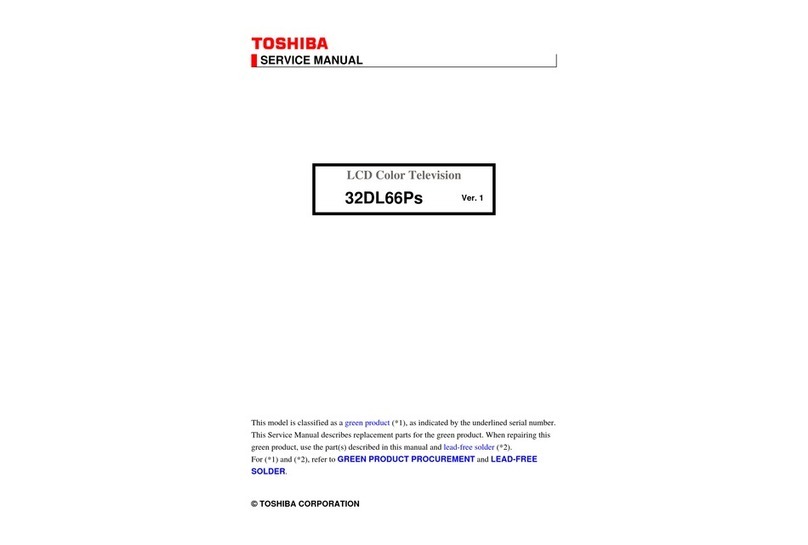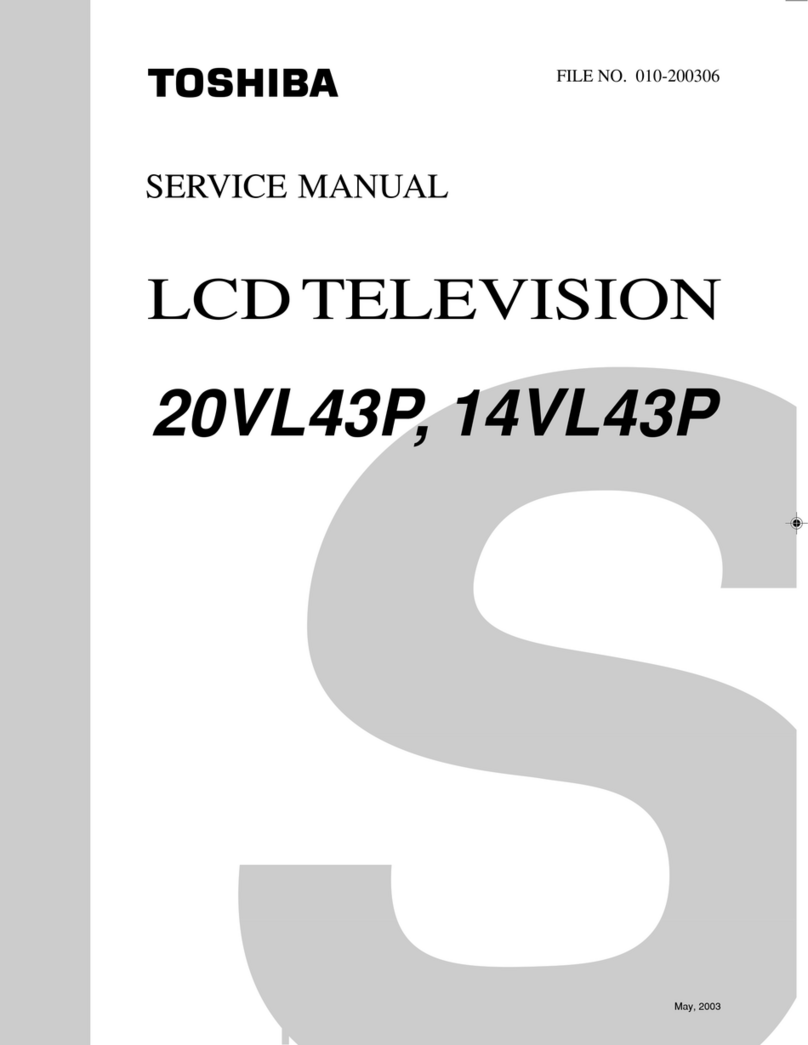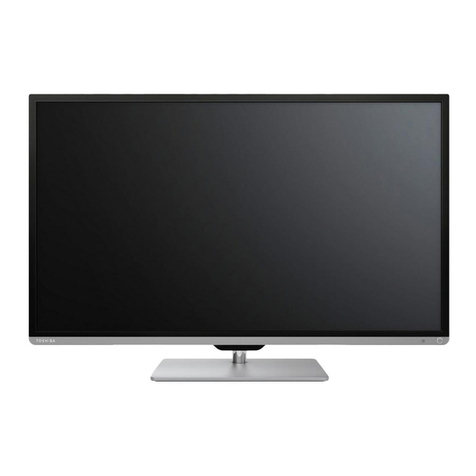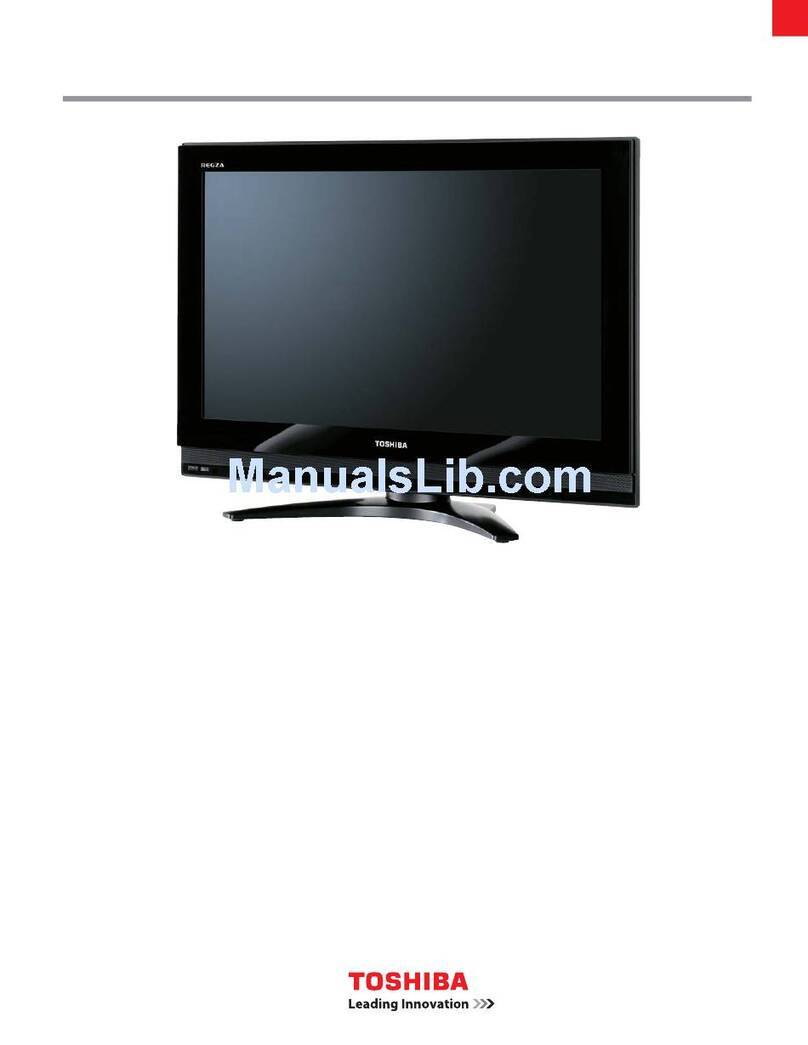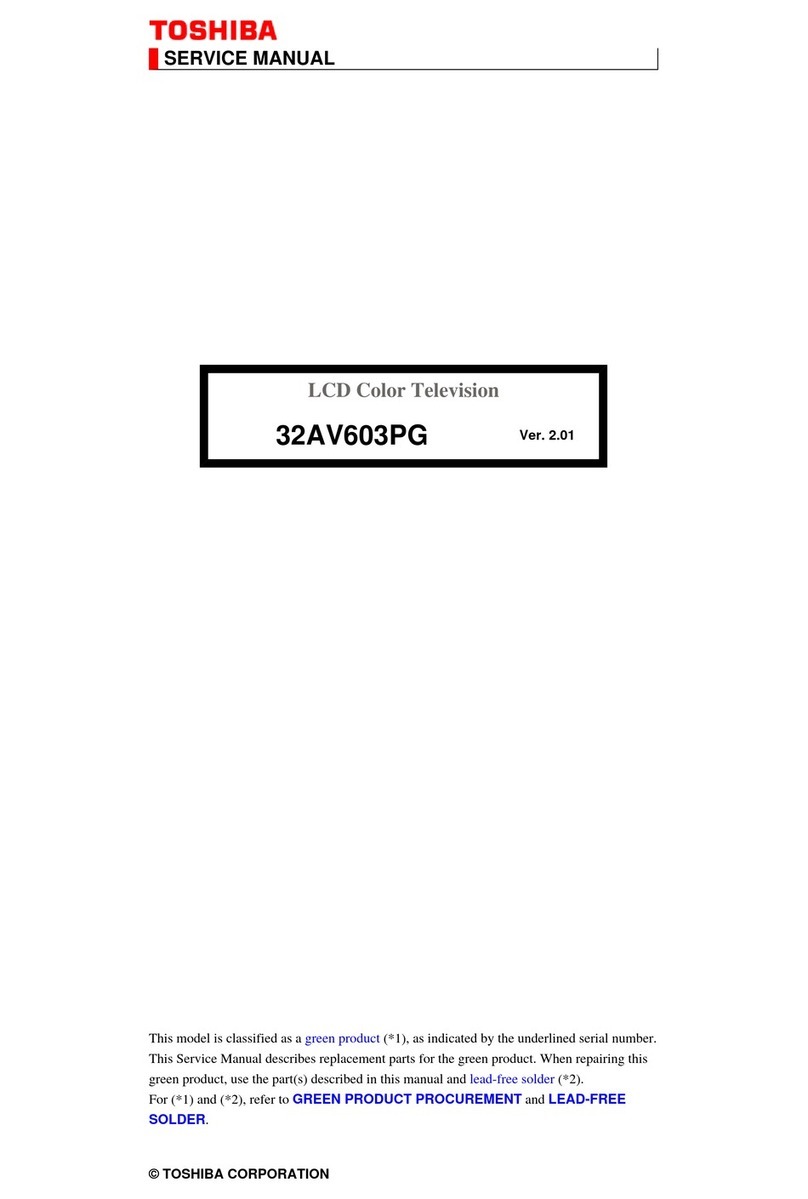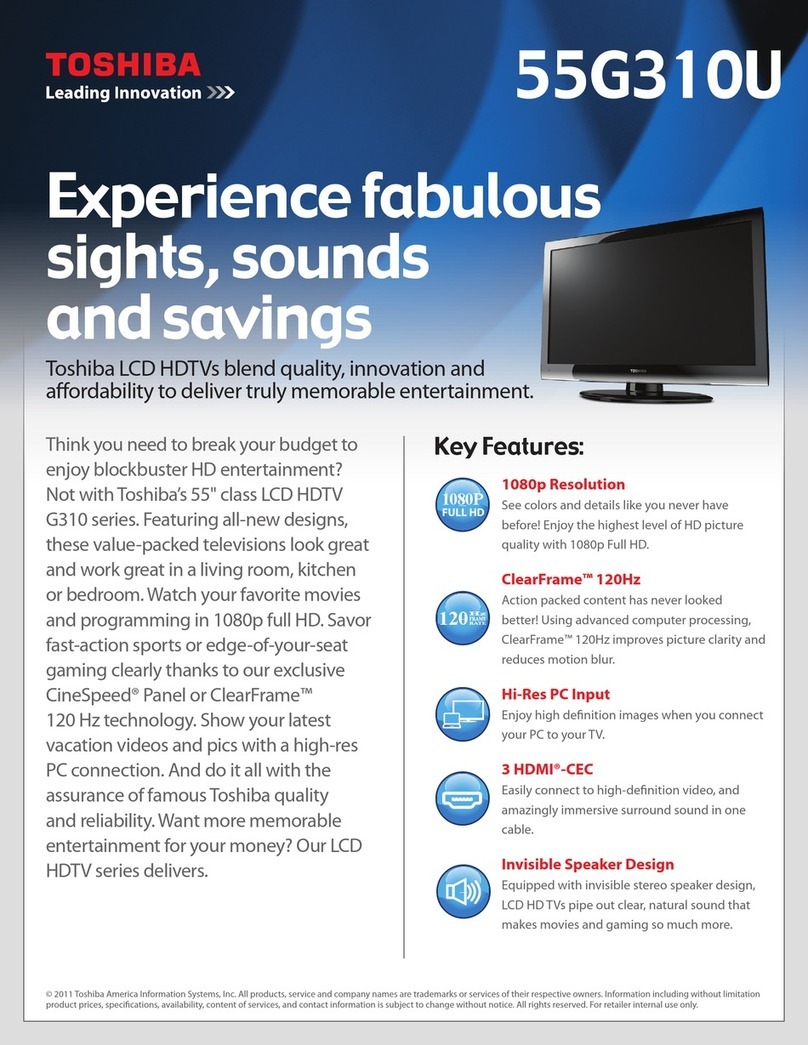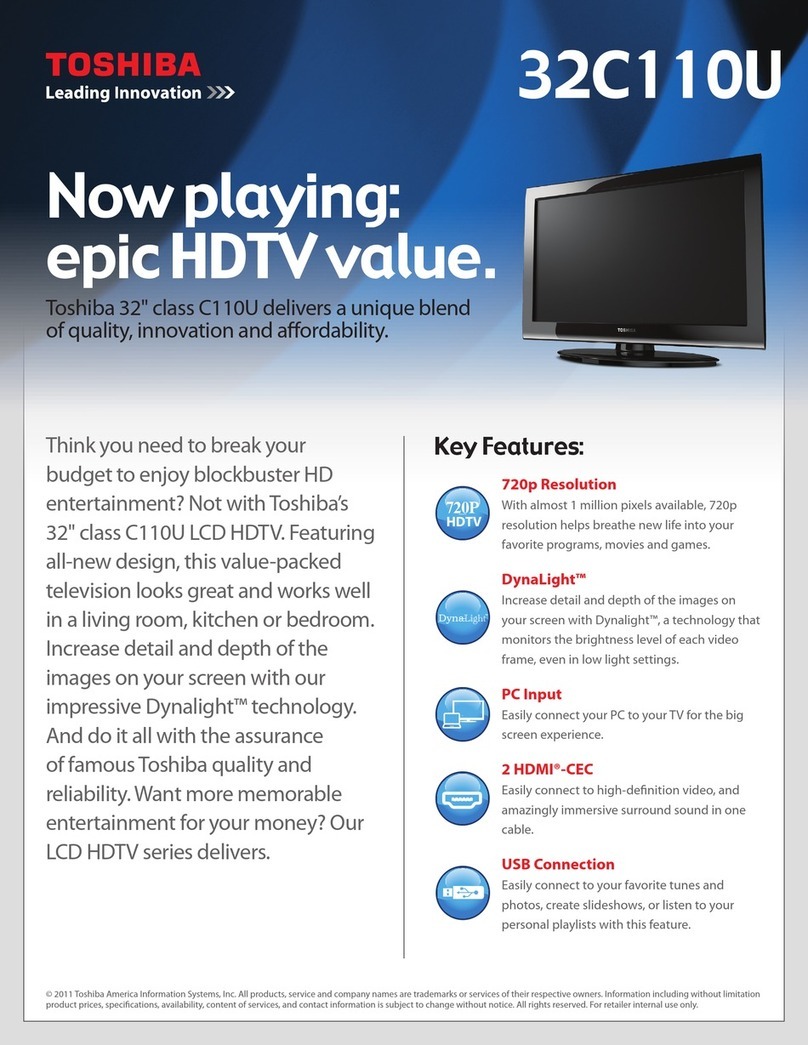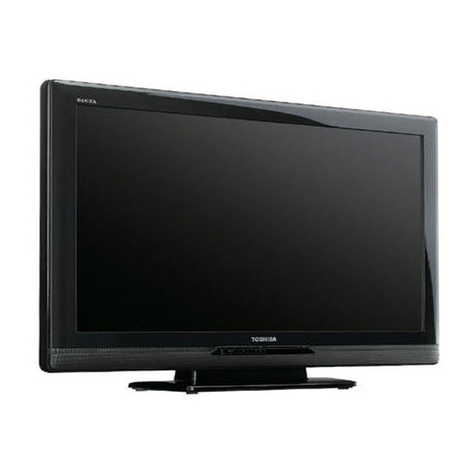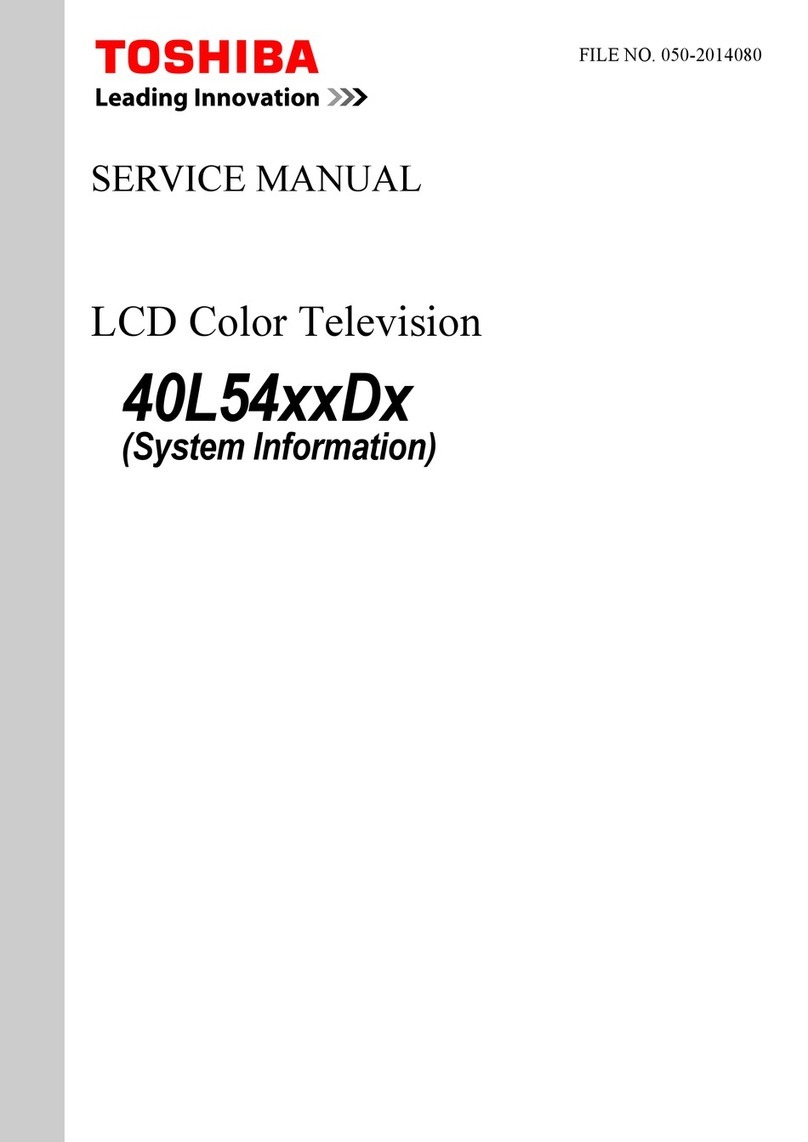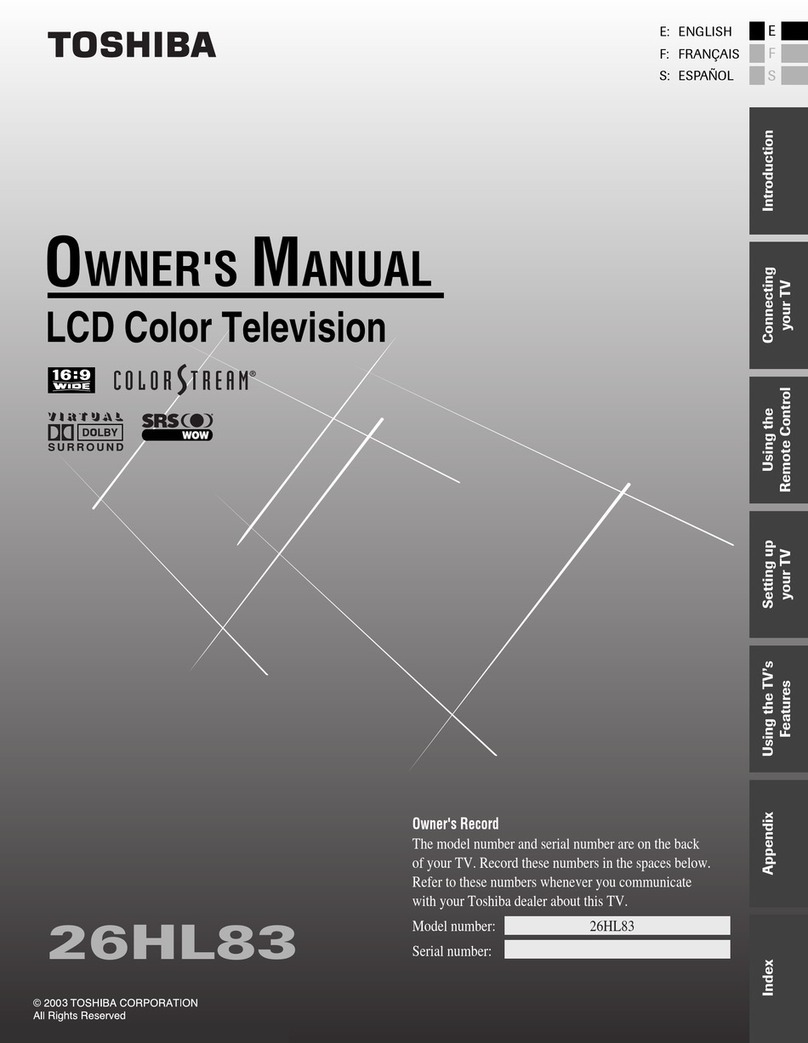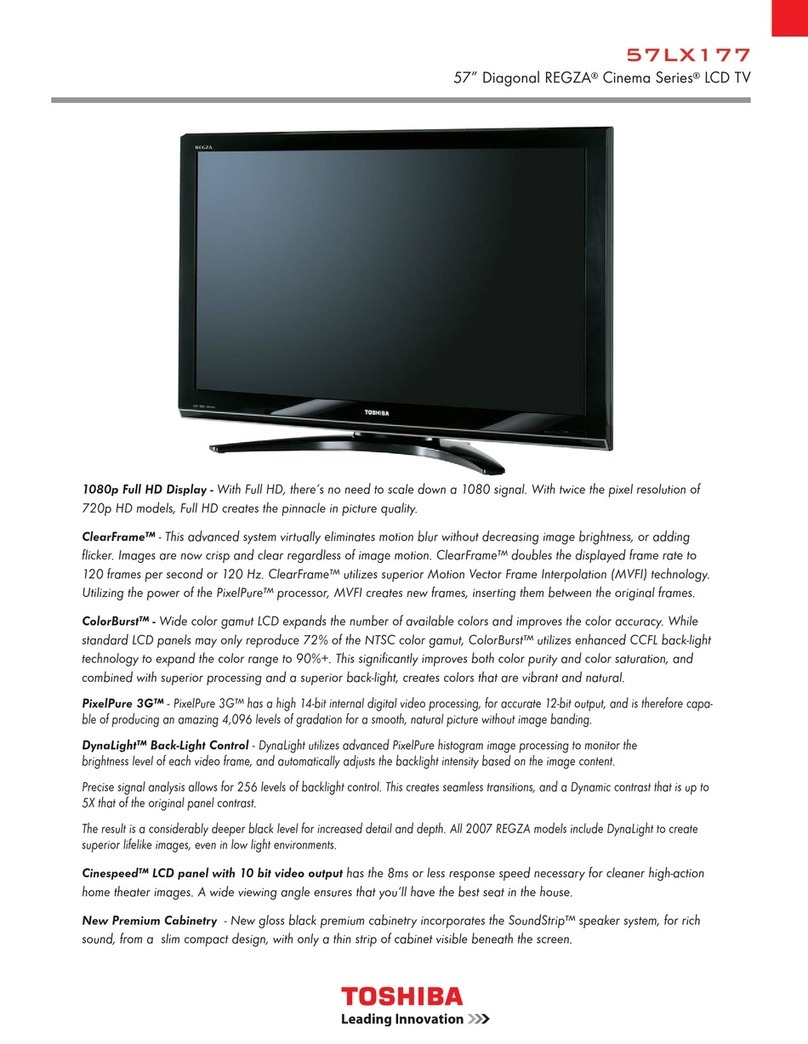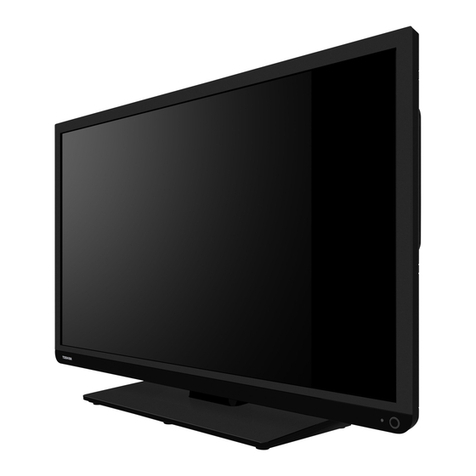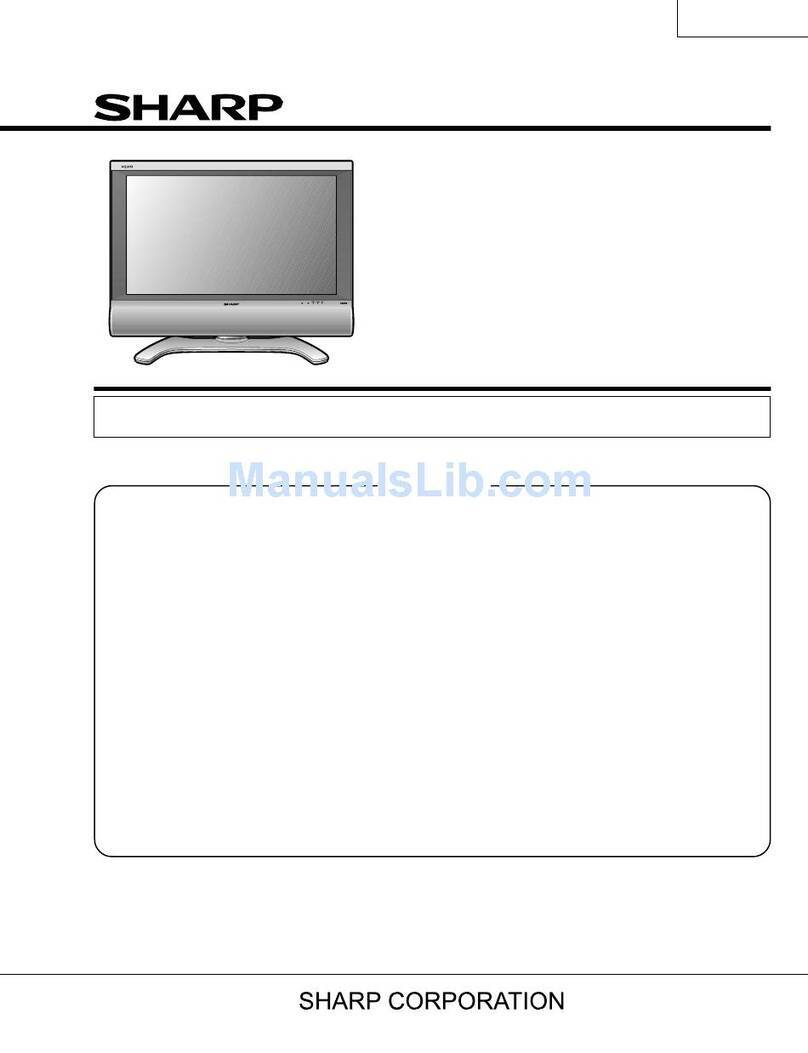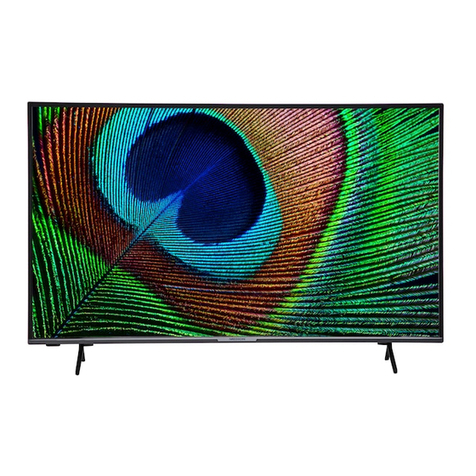3) Some pixels of the screen do not light up
The LCD display panel is manufactured
using an extremely high level of precision
technology; however, sometimes some pixels
of the screen may be missing picture elements
or have luminous spots. This is not a sign of
malfunction.
4) Interference
The LCD display may cause interference
in image, sound, etc. of other electronic
equipment that receives electromagnetic waves
(e.g. AM radios and video equipment).
5) Using in low temperature areas
If you use the TV in the room of 0°C or less,
the picture brightness may vary until the LCD
monitor warms up.
This is not a sign of malfunction.
6) Afterimages
If a still picture is displayed, an afterimage may
remain on the screen; however, it will disappear.
This is not a sign of malfunction.
Exemptions
• Toshibaisnotliableforanydamagecausedbyres,
natural disaster (such as thunder, earthquake, etc�), acts
by third parties, accidents, owner’s misuse, or uses in
other improper conditions�
• Toshibaisnotliableforincidentaldamages(suchas
protlossorinterruptioninbusiness,modicationor
erasure of record data, etc�) caused by use or inability to
use product�
• Toshibaisnotliableforanydamagecausedbyneglect
of the instructions described in the owner’s manual�
• Toshibaisnotliableforanydamagecausedbymisuse
or malfunction through simultaneous use of this product
and the connected equipment�
Trademark Information
• ManufacturedunderlicensefromDolbyLaboratories.
Dolby and the double-D symbol are trademarks of
Dolby Laboratories�
• AudysseyEQisbasedontheaward-winningAudyssey
MultEQtechnology.Itistherst-everroomequalization
solution that can achieve optimum sound for a large
listening area and it is featured in many high end home
theater products�
Audyssey EQ is used in the TV tuning process to
calculateanequalizationsolutionthatcorrectstime
and frequency response problems in TV systems� This
results in clear, rich sound with more intelligible dialog�
• ManufacturedunderlicensefromAudyssey
Laboratories� U�S� and foreign patents pending�
Audyssey EQ is a registered trademark of Audyssey
Laboratories�
• HDMI,theHDMIlogo,andHigh-DenitionMultimedia
Interface are trademarks or registered traemarks of
HDMI Licensing LLC in the United Stats and other
countries�
• DVBisaregisteredtrademarkofDigitalVideo
Broadcasting Project�
• DivX
®
is a registered trademark of DivX, Inc�, and it is
used under license�
Covered by one or more of the following U�S� Patents:
7,295,673; 7,460,688; 7,519,274
• SDHClogosexpresstheHighCapacitySDMemory
Card more than 2GB and the logos include the SDHC,
miniSDHC, microSDHC and smartSDHC Logos�
These logos are licensed by SD-3C, LLC�
• INSTAPORT™and INSTAPORT logo are trademarks
of Silicon Image, Inc� in the United States and other
countries�
• DLNA
®
, the DLNA Logo and DLNA CERTIFIED™
aretrademarks,servicemarks,orcerticationmarksof
the Digital Living Network Alliance�
• YouTubeandtheYouTubeLogoaretrademarksof
Google Inc�
• ThisproductcontainsNetFrontBrowserofACCESS
CO�, LTD�
ACCESS, the ACCESS logo and NetFront are
trademarks or registered trademarks of ACCESS CO�,
LTD� in the United States, Japan and other countries�
© 2010 ACCESS CO�, LTD� All rights reserved�
This software is based in part on the work of the
Independent JPEG Group�
• ThisproductcontainsAdobe
®
Flash
®
Player software
under license from Adobe Systems Incorporated�
Copyright © 1995-2009 Adobe Systems Incorporated�
All rights reserved� Adobe and Flash are trademarks of
Adobe Systems Incorporated�
• MPEGLayer-3audiocodingtechnologylicensedfrom
Fraunhofer IIS and Thomson�
• THISPRODUCTISLICENSEDUNDERTHE
AVC PATENT PORTFOLIO LICENSE FOR THE
PERSONAL AND NONCOMMERCIAL USE
OF A CONSUMER TO (i) ENCODE VIDEO IN
COMPLIANCE WITH THE AVC STANDARD (AVC
VIDEO) AND/OR (ii) DECODE AVC VIDEO THAT
WAS ENCODED BY A CONSUMER ENGAGED
IN A PERSONAL AND NONCOMMERCIAL
ACTIVITY AND/OR WAS OBTAINED FROM A
VIDEO PROVIDER LICENSED TO PROVIDE AVC
VIDEO� NO LICENSE IS GRANTED OR SHALL BE
IMPLIED FOR ANY OTHER USE� ADDITIONAL
INFORMATION MAY BE OBTAINED FROM MPEG
LA, L�L�C�
SEE HTTP://WWW�MPEGLA�COM
Introduction
